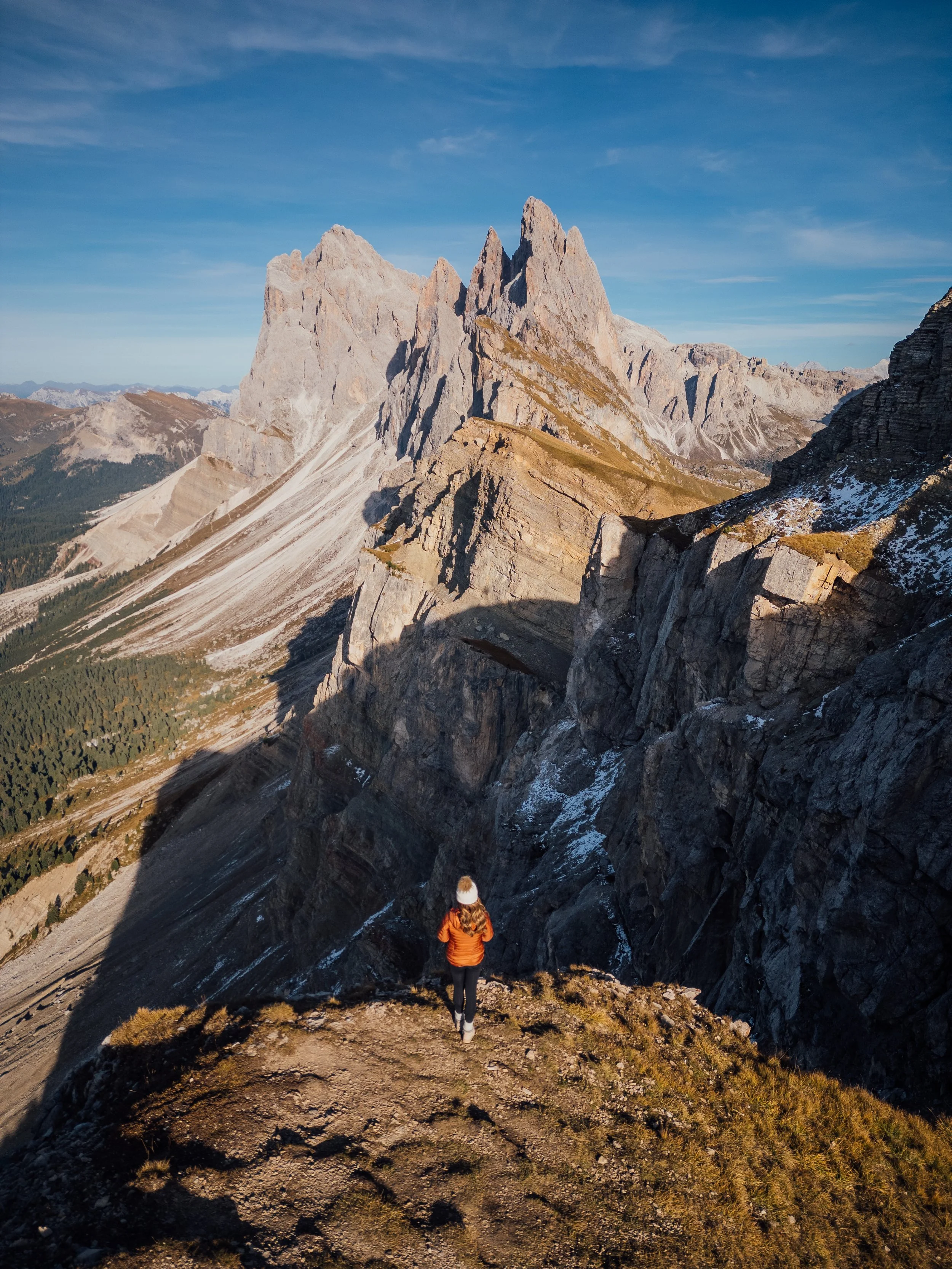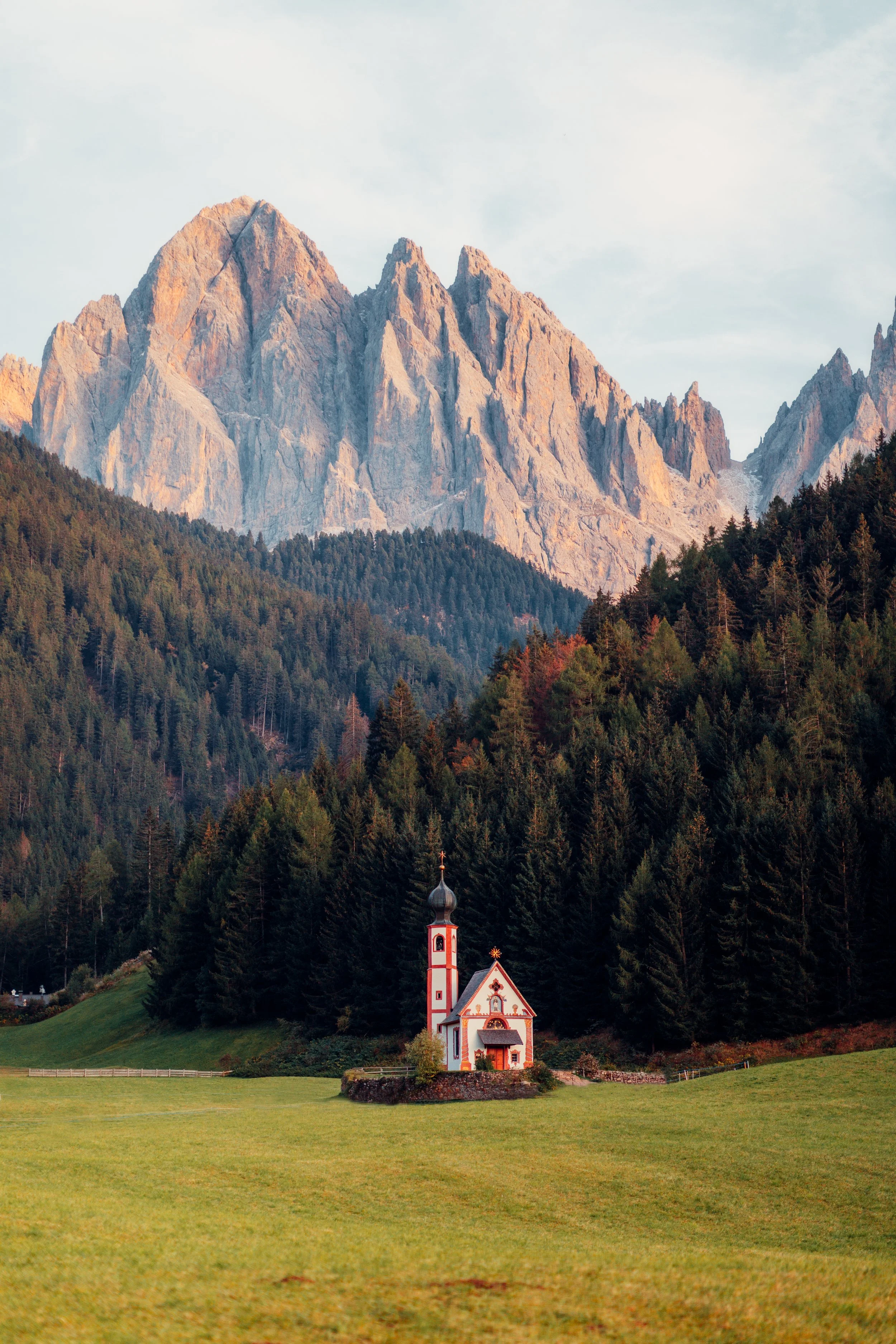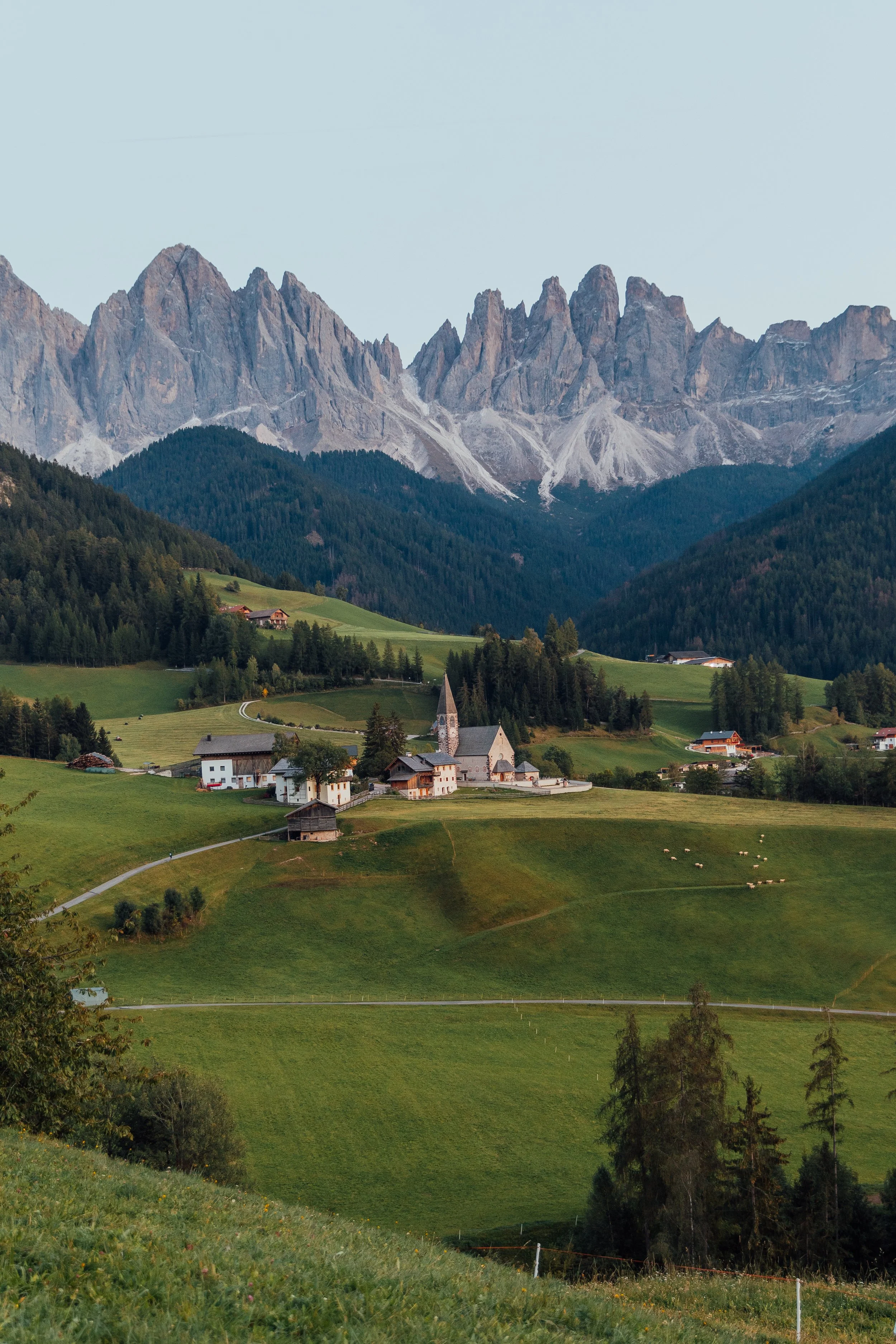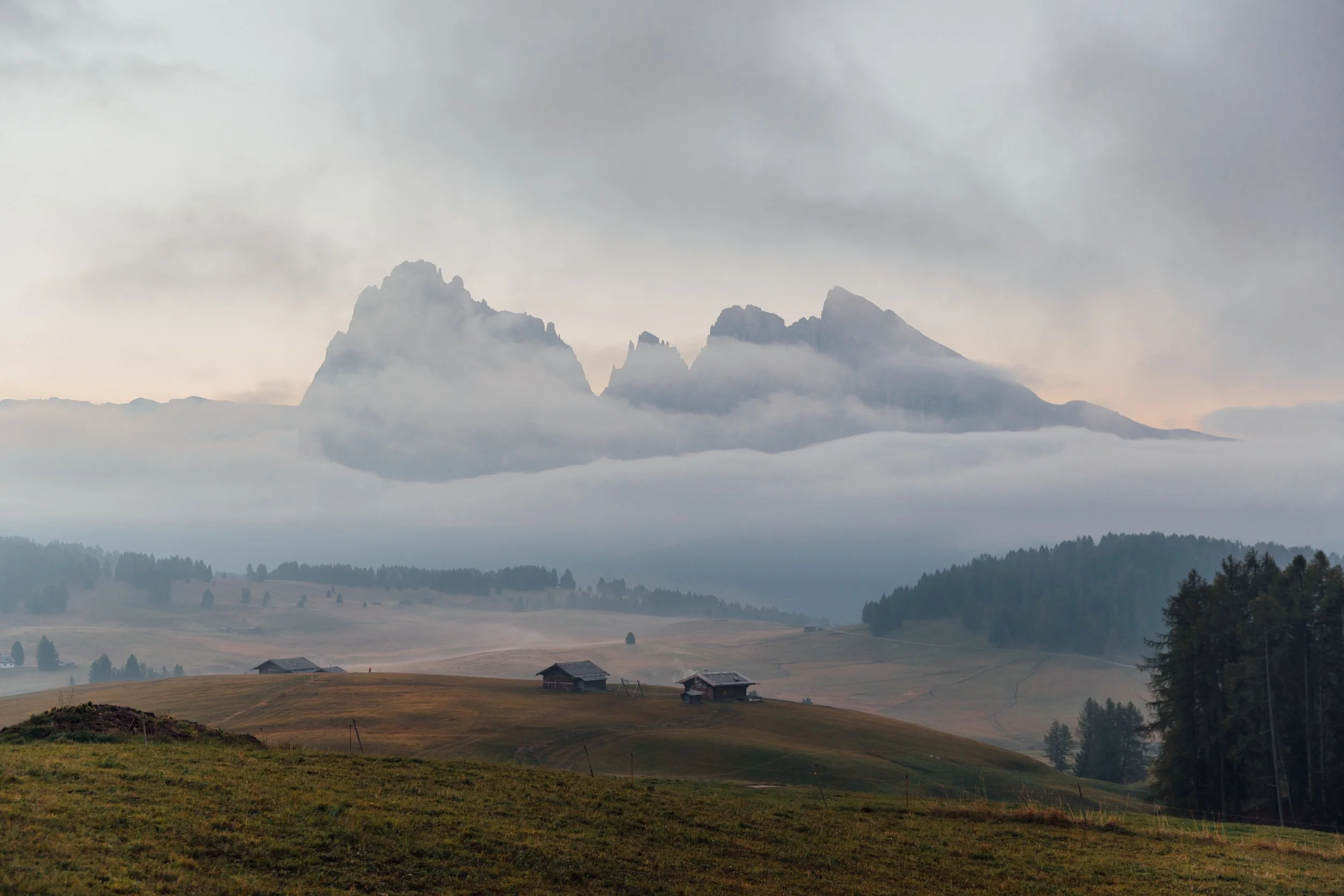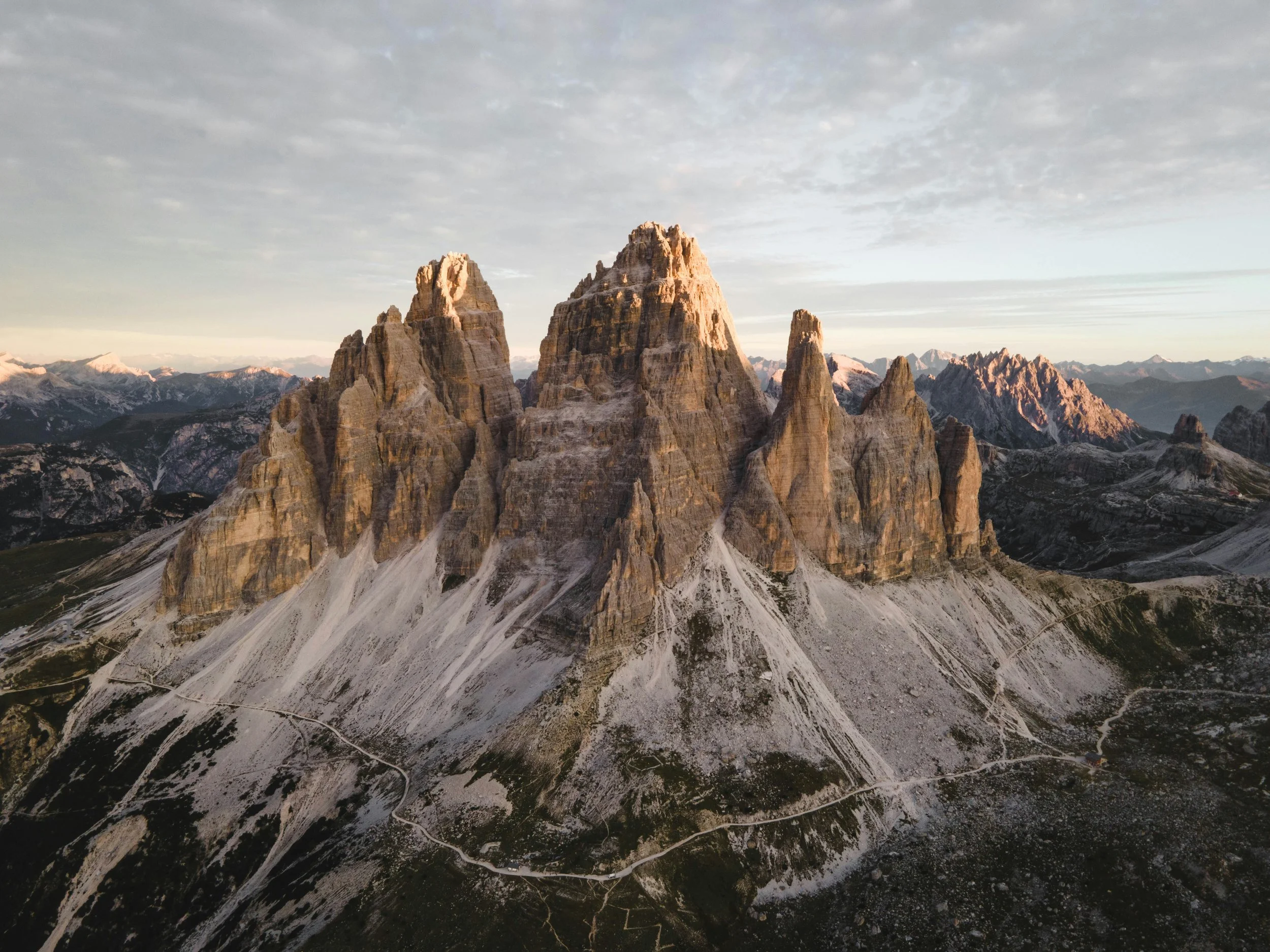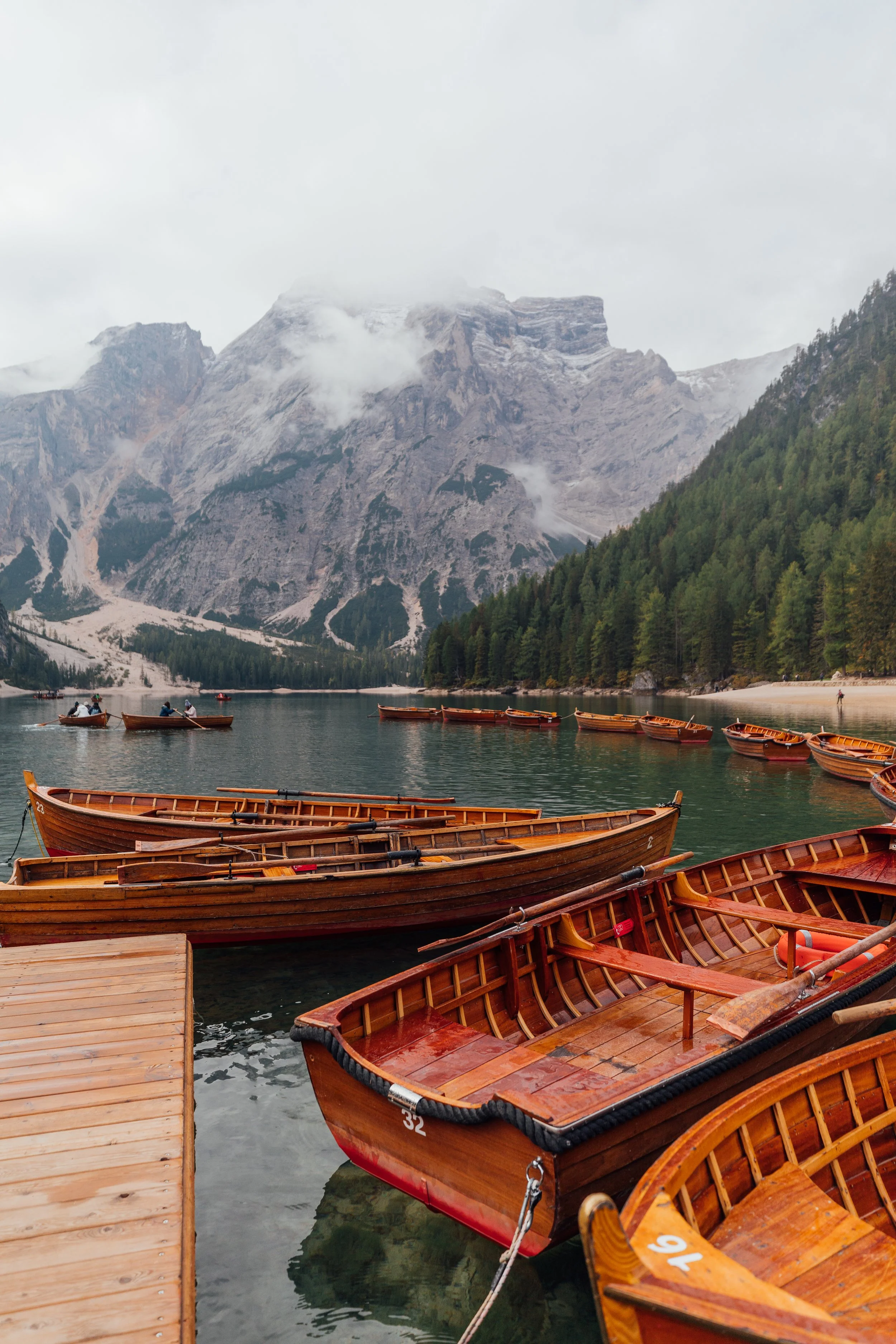The Ultimate Guide to Traveling to the Dolomites: Everything You Need to Know
Set off on a road trip through the Italian Dolomites, and you're in for a real treat! This place is like a giant, beautiful postcard that you get to step right into. Picture yourself winding through jaw-dropping mountain scenery, stumbling upon hidden lakes that look too good to be true, and just soaking in that epic Italian vibe. I did just that, and let me tell you, it was every bit as amazing as it sounds. From scaling the rugged paths of Seceda to chilling by the crystal waters of Lago Di Braies, this adventure was a non-stop series of "wow" moments and unbelievable photos and videos.
In this article, I'll share every detail of our autumnal excursion through the Dolomites. You'll find comprehensive information about planning your trip, including accommodation options, must-visit sights, recommended itinerary, and much more.
Your Ultimate Guide for a Road Trip in Italy's Dolomites
Nestled in northeastern Italy, close to Austria's border, the Dolomites are a breathtaking mountain range. The region, once part of the Austro-Hungarian Empire until its annexation by Italy in 1918, is steeped in a blend of cultures. Here, the German language predominates, and the architecture distinctly echoes Austrian influences.
The Italian Dolomites boast some of the planet's most dramatic mountain landscapes, attracting outdoor enthusiasts and tourists throughout the year. Summer brings hikers, climbers, and bikers, while winter lures ski lovers to its vast network of slopes and lifts.
When to Visit the Dolomites
We timed our Dolomites visit for September 2022, aiming to avoid crowds and witness the region's spectacular autumn colors. Remember, peak foliage can vary annually based on weather conditions.
Summer (June - August) is the perfect time to visit the Dolomites, as this stunning mountain range in Italy offers a plethora of outdoor activities and breathtaking landscapes. The weather during the summer months is generally mild and pleasant, making it an ideal season for exploring the region.
Getting to Northern Italy
Reaching northern Italy is quite straightforward, with several major airports within a short drive to the Dolomites. We flew into Milan and drove about 4 hours to our first Dolomite destination. Other nearby major airports include Venice, Munich, Zurich, and Innsbruck.
Zurich Airport – Switzerland: 5-6 hours
Malpensa Airport – Milan, Italy: 4-5 hours
Munich International Airport – Germany: 3-4 hours
Marco Polo International Airport – Venice, Italy: 2-3 hours
Innsbruck Airport – Austria: 2-3 hours
How Long Should you Stay
The length of your stay in the Dolomites might vary based on your travel preferences and whether photography is a priority. As content creators, we allocated more time at each location to accommodate weather changes and capture the autumn colors. Our trip lasted 8 nights, split between two primary destinations. For those less focused on photography, around 5 nights should suffice to explore the area's highlights.
Accommodation Options in the Dolomites
The Dolomites offer a range of accommodation choices, from guesthouses to hotels, rifugios, vacation rentals, camping, and camper vans. We stayed in VRBO apartments, which perfectly suited our needs. We split our time between two towns: Ortisei (Urtijëi in German) and Cortina D’Ampezzo.
Traveling Around the Dolomites
We found that the most convenient way to explore the Dolomites was by car, providing freedom and flexibility, especially during shoulder seasons. We rented our car in Milan and found the process straightforward. Be mindful of Italy's speedy driving style, toll roads, and speed cameras.
Travel Tips for THE Dolomites
Food and Dining: Autumns in the Dolomites often mean fewer culinary options. It's wise not to rely solely on online information like Google Maps for restaurant hours. Exploring local eateries and asking locals for recommendations can lead to delightful gastronomic discoveries. Also, experiencing local cuisines at small, family-run establishments can be a highlight.
Cost-Saving Strategies: Consider traveling with a group. The Dolomites offer numerous accommodation options ideal for groups, such as VRBO or Airbnb rentals with multiple bedrooms. This not only makes the stay more economical but also helps in sharing costs for parking and entrance fees, making the entire trip more budget-friendly.
Seasonal Closures: Many facilities like rifugios, cable cars, and gondolas typically close during the fall. It’s important to check their operational status online ahead of your visit to avoid any disappointments.
Currency and Payments: The local currency is the Euro. While major establishments accept credit cards, it's essential to carry some cash for smaller shops or rural areas. ATMs are widely available, but keeping a small amount of cash handy is always a good practice.
Speed Limits and Road Safety: The Dolomites region, especially in the towns, is known for its speed cameras. Adhering to speed limits is crucial for safety and avoiding fines. The roads in the mountains can be winding and narrow, so cautious driving is recommended.
Language and Communication: Italian and German are the primary languages spoken in the Dolomites. Although many locals speak English, especially in tourist areas, having a translation app can be helpful for more remote locations. Learning a few basic phrases in Italian and German can also enhance your interaction with locals.
Driving and Car Rentals: Renting a car offers the most flexibility for exploring the Dolomites. Most car rentals in Europe are manual transmission, so specify if you need an automatic. Remember that Italian drivers can be fast and assertive, which might be different from what you’re used to. Also, be aware of toll roads and the option to pay via cash or card.
Accommodation Preferences: The Dolomites offer a variety of accommodations, from luxury hotels to rustic rifugios. Choosing where to stay can significantly impact your experience. Apartments or vacation rentals can provide a more local and personalized experience, while hotels might offer additional services and conveniences.
Packing Essentials: The mountain weather can be unpredictable. Packing layers that can be easily added or removed is key. This includes warm clothing, rain gear, and comfortable hiking shoes. Also, don’t forget essentials like a first-aid kit, sunscreen, and a reusable water bottle.
Photography and Electronics: For those keen on photography, carrying extra memory cards, batteries, and possibly a tripod can make a big difference. For other electronics, remember that Italy uses Type C and F power outlets, so bringing appropriate adapters is necessary.
Environmental Consideration: The Dolomites are a natural treasure. Practicing Leave No Trace principles by disposing of waste properly, staying on marked trails, and respecting wildlife habitats helps in preserving the area's natural beauty.
Emergency Preparedness: Familiarize yourself with local emergency numbers and basic first-aid procedures. Carrying a small first-aid kit is advisable, especially when hiking or exploring remote areas.
Exploring Lesser-Known Areas: Beyond the popular tourist spots, the Dolomites are filled with hidden gems. Don’t hesitate to venture off the beaten path and explore lesser-known areas. Sometimes, the most memorable experiences come from unexpected discoveries.
My Favorite Must-Visit Places in the Dolomites:
St. Valentin Church/Siusi: Nestled in the western Dolomites, the quaint town of Siusi is home to the picturesque St. Valentin Church. Perched on a hilltop, it offers stunning views, especially during sunrise or sunset. The church is renowned for its beautiful frescoes, both inside and on its outer walls.
Seceda: The journey to Seceda is a highlight, featuring a challenging but rewarding hike. The ascent takes 1.5 – 2.5 hours, depending on your pace. The steep trail rewards you with breathtaking views at sunrise. Remember to dress warmly and bring water.
Note: There is a gondola that runs to the top of Seceda during peak seasons. If you don’t feel like hiking to the top, you can use this depending on the time you visit and if it is currently operating.
Val Di Funes: A gem in the Dolomites, Val Di Funes offers remarkable views, particularly at the Church of St. Johann near Santa Magdalena. The church, set against the Odle mountain range, is accessible from a viewing platform that allows for stunning photography opportunities.
Alpe Di Siusi (Seisler Alm): Europe's largest high alpine meadow, Alpe Di Siusi, is a vision of natural beauty. We parked at Compatsch and walked about an hour to a scenic spot, ideal for capturing sunrise. There is limited parking in the area so driving is restricted to only if you’re staying in Seisler Alm so make sure to factor that into your timing. The meadow’s expansive beauty can be explored at your leisure. We didn’t get the best weather but still really enjoyed the view and surrounding area.
Gardena Pass (Passo Gardena): A central pass in the Dolomites, Gardena Pass is particularly enchanting in the autumn, with golden larch trees dotting the landscape. A trail at the pass's summit provides stunning views of the Sella mountains, and you can also visit the Gardena Pass Chapel.
Passo Giau: Known for its 360-degree mountain panoramas, Passo Giau offers numerous hiking trails. The top of the pass features a rifugio, and during busier seasons, a small hotel is available for overnight stays.
Tre Cime Di Lavaredo: This area, my personal favorite, boasts awe-inspiring peaks and a variety of hiking trails. The Tre Cime Di Lavaredo loop hike is accessible from the parking lot, offering some of the most spectacular mountain vistas. Our favorite viewpoint was the Cadini di Misurina - absolutely stunning and a great place for photos!
Lago Di Braies: Often bustling with visitors, Lago Di Braies is a stunning lake with a trail circling it. The hot chocolate at the nearby cafe is a must-try. Larger hiking trails also start from this area.
Madonna Della Corona: While not in the Dolomites, this church is a worthy detour on the way from Milan. The town of Spiazzi offers parking, from where a short trail leads down to the church.
Suggested Itinerary for the Dolomites
Day 1: Start from Milan, detouring to Madonna Della Corona. Continue to Ortisei for your first night. If time permits, visit St. Valentin Church in Siusi for sunset views. Dine in Ortisei, where options like Restaurant and Pizzeria Cascades await.
Day 2: Rise early for a hike to Seceda, ensuring you carry enough water and snacks. After returning to Ortisei, head to Val Di Funes for sunset, stopping first at the Church of St. Johann. Finish your day with dinner at a local restaurant like Pizzeria Restaurant Viel Nois in San Pietro.
Day 3: Begin at Alpe Di Siusi, exploring the meadows. Check out from your accommodation in Ortisei, have lunch, and then drive to Cortina D’Ampezzo, stopping at Gardena Pass for a hike and views.
Day 4: After breakfast, drive to Passo Giau for a scenic hike. Next, head towards Tre Cime Di Lavaredo, stopping at Lago Di Misurina and Lago Di Antorno. Complete the Tre Cime loop hike before returning to Cortina D’Ampezzo for dinner.
Day 5: Visit Lago Di Braies early in the morning to avoid crowds. Then, head back towards Cortina D’Ampezzo, stopping at Lago Di Dobbiaco and Lago Di Landro. Spend the afternoon revisiting any favorite spots.
Day 6: On your final day, begin your journey back to the airport or extend your trip by heading south to Venice for a change of scenery.
In summary, a journey through the Italian Dolomites is an enchanting experience, combining breathtaking landscapes, rich cultural encounters, and boundless adventure. From towering peaks to serene lakes, each destination within this majestic mountain range offers its unique charm. As you embark on this voyage, embrace the local flavors, immerse in the diverse cultures, and treasure the pristine beauty of nature. Whether you’re pursuing thrilling outdoor activities or seeking tranquil moments amidst stunning scenery, the Dolomites promise an unforgettable adventure that resonates deep within, leaving lasting memories and a yearning to return.
FAQ
What are the best accommodations options in the Dolomites?
When it comes to choosing the best accommodations options in the Dolomites, there are several factors to consider. The Dolomites offer a range of choices, from luxurious hotels to cozy mountain lodges, ensuring there is something to suit every traveler's preferences.
For those seeking a luxurious experience, there are prestigious hotels nestled amidst the picturesque mountains, offering top-notch amenities, spa facilities, and gourmet dining options. These hotels are often located in popular tourist areas, providing convenience and access to nearby attractions.
On the other hand, if you prefer a more authentic and rustic experience, mountain huts and lodges are a popular choice. These accommodations give you the chance to immerse yourself in the natural beauty of the Dolomites, while still providing basic comforts such as comfortable beds and hearty meals.
For budget-conscious travelers, there are also numerous guesthouses and bed and breakfast options available. These accommodations provide a cozy and welcoming atmosphere, often run by locals who can offer insider tips and advice on exploring the Dolomites.
Regardless of your preferences and budget, it is recommended to book your accommodation well in advance, especially during peak seasons, as the Dolomites attract visitors from all around the world. With so many wonderful accommodation options to choose from, you are sure to find the perfect place to stay and make the most of your time in this breathtaking mountain range.
What are the options for transportation within the Dolomites once I arrive?
There are several transportation options available for getting around the Dolomites once you arrive. These options include:
Public Transportation: The Dolomites are well-connected by various public transportation options such as buses and trains. There are regular bus services that operate within the region, making it easy to travel between different towns and villages. Additionally, the local train network provides convenient connections to major towns and cities in the area.
Car Rental: Renting a car is a popular option for exploring the Dolomites at your own pace. There are several car rental agencies available in the region, offering a wide range of vehicles to choose from. Having a car allows you to have more flexibility and freedom to visit remote areas and access scenic routes.
Taxi Services: Taxis are also available in the Dolomites, providing a convenient and hassle-free way to travel around the region. Taxi services can be found at major transportation hubs such as airports and train stations, as well as in popular tourist areas. It is advisable to pre-book taxis in advance, especially during peak tourist seasons.
Cycling: The Dolomites offer a fantastic opportunity for cycling enthusiasts. There are many dedicated cycling routes and trails that cover the region, catering to different skill levels. You can rent bicycles locally or even bring your own bike to explore the picturesque landscapes and charming towns at a leisurely pace.
Hiking: The Dolomites are renowned for their stunning hiking trails, offering breathtaking views and unforgettable experiences. Hiking is a popular mode of transportation within the region, allowing visitors to explore nature trails, mountain passes, and alpine meadows. Make sure to pack appropriate hiking gear and choose trails that match your fitness level.
These transportation options provide convenient and varied ways to explore the Dolomites, ensuring that you can easily navigate the region and make the most of your visit.
Is it possible to do a day trip to the Dolomites from nearby cities like Venice or Verona?
Yes, it is definitely possible to do a day trip to the Dolomites from nearby cities like Venice or Verona. The Dolomites are conveniently located in the northeastern part of Italy, making them easily accessible for a day excursion.
From Venice, you can reach the Dolomites by taking a direct train or bus to cities like Cortina d'Ampezzo or Bolzano. These journeys typically take around 2 to 3 hours, depending on the specific destination. Once you arrive, you can explore the stunning landscapes, go hiking or biking, or even take a cable car ride to enjoy panoramic views of the mountains.
If you are in Verona, you can also plan a day trip to the Dolomites. The most common way to reach the Dolomites from Verona is by taking a train to Bolzano or Trento. The train journey usually takes around 1.5 to 2 hours. Once you arrive, there are various activities you can engage in, such as visiting picturesque alpine towns or embarking on a scenic drive through the Dolomite passes.
It is important to note that due to the vastness of the Dolomites and the limited time available on a day trip, it is recommended to focus on a specific area or attraction to make the most of your visit. It is also advisable to check the weather conditions and plan accordingly, as the Dolomites experience varying climates throughout the year.
In conclusion, while a day trip to the Dolomites from cities like Venice or Verona is feasible, it is essential to plan your itinerary in advance to optimize your time and experience in this breathtaking mountain range.
What are the best hiking trails or outdoor activities in the Dolomites?
The Dolomites offer a wide range of hiking trails and outdoor activities that cater to both beginners and experienced adventurers alike. Here are some of the best options to explore:
Tre Cime di Lavaredo: Located in the Sexten Dolomites, this iconic and majestic mountain range offers breathtaking views and a variety of hiking trails suitable for all skill levels. The most popular route takes you around the three towering peaks, providing panoramic vistas of the surrounding landscape.
Alta Via 1: For more experienced hikers seeking a multi-day adventure, the Alta Via 1 is a must-try. This long-distance trail spans approximately 150 kilometers and takes you through the heart of the Dolomites, passing stunning peaks, picturesque valleys, and charming mountain huts along the way.
Seceda: Situated in the Val Gardena region, Seceda is a paradise for outdoor enthusiasts. In the summer months, it transforms into a haven for hikers, offering a network of well-marked trails that allow you to immerse yourself in the beauty of the Dolomites. The cable car ride to the top provides breathtaking views of the surrounding peaks.
Lago di Braies: Nestled in the stunning Prags Dolomites, Lago di Braies is a jewel of natural beauty. Surrounded by lush forests and towering peaks, it offers a picturesque setting for leisurely strolls or more challenging hikes. You can also rent a boat to explore the crystal-clear waters of the lake.
Sella Ronda: If you're a mountain biking enthusiast, the Sella Ronda is a must-visit destination. This famous circuit takes you on an exhilarating ride around the Sella massif, providing stunning views and thrilling descents through breathtaking landscapes.
Via Ferratas: The Dolomites are renowned for their extensive network of via ferratas, which are protected climbing routes equipped with steel cables, ladders, and footpaths. These routes offer a unique combination of hiking and climbing, allowing you to conquer vertical walls while enjoying the magnificent scenery.
Whether you're seeking a leisurely hike, a challenging trek, or an adrenaline-pumping adventure, the Dolomites have something to offer every outdoor enthusiast. Lace up your boots, fill your backpack, and get ready to explore the natural wonders of this stunning mountain range.
What are the must-visit towns and attractions in the Dolomites?
The Dolomites region in Italy is known for its stunning natural beauty and charming towns. Here are some of the must-visit towns and attractions in the Dolomites:
Cortina d'Ampezzo: Located in the heart of the Dolomites, Cortina d'Ampezzo is a popular destination for outdoor enthusiasts. With its picturesque mountains and charming alpine architecture, it offers a wide range of activities such as hiking, skiing, and mountain biking. Don't miss the stunning views from the Tre Cime di Lavaredo or the enchanting Lake Misurina.
Bolzano: Nestled in the South Tyrol region, Bolzano is a vibrant city known for its mix of Italian and Austrian influences. Visitors can explore the historical center with its beautiful Renaissance architecture and visit the Ötzi Museum, which houses the famous Iceman mummy. A trip to Bolzano is not complete without a visit to the nearby Renon Plateau, offering breathtaking views of the Dolomites.
Ortisei: Situated in the Val Gardena valley, Ortisei is a picturesque village surrounded by stunning mountain scenery. It is a great base for exploring the Dolomiti Superski area, with over 1,200 kilometers of slopes. In the summer, visitors can enjoy hiking through the picturesque Alpe di Siusi or take a cable car ride to the Seceda plateau for panoramic views.
San Cassiano: Known for its authentic charm and culinary delights, San Cassiano is a hidden gem in the Dolomites. It is home to several Michelin-starred restaurants, offering a unique gastronomic experience. Visitors can also enjoy hiking in the nearby Puez-Odle Nature Park or explore the traditional Ladin culture in the nearby village of La Villa.
Tre Cime di Lavaredo: One of the most iconic landmarks in the Dolomites, the Tre Cime di Lavaredo is a trio of distinctive peaks that attract hikers and climbers from around the world. The panoramic loop trail around the peaks offers breathtaking views of the surrounding mountains and valleys.
Lago di Braies: Also known as the "Pearl of the Dolomites," Lago di Braies is a stunning alpine lake surrounded by majestic peaks. Visitors can rent a rowboat and explore the crystal-clear waters or take a leisurely stroll around the lake. The tranquil atmosphere and scenic beauty make Lago di Braies a must visit in the Dolomites.
Alta Badia: Located in the heart of the Dolomites, Alta Badia is a paradise for outdoor enthusiasts and food lovers alike. This charming valley offers a wide range of activities, from hiking and mountain biking to world-class skiing in the winter. Don't miss the opportunity to indulge in the local cuisine at one of the many gourmet restaurants and feast on delicious traditional dishes.
Val di Funes: Nestled in the picturesque Val di Funes, this idyllic valley is famous for its postcard-worthy views of the Odle mountain range. Take a leisurely stroll through the meadows and enjoy the stunning scenery or challenge yourself with a hike to the Puez-Odle Nature Park. The peaceful atmosphere and untouched beauty of Val di Funes will leave you in awe.
Alpe di Siusi: As the largest mountain plateau in Europe, Alpe di Siusi offers endless opportunities for outdoor activities. With over 350 kilometers of hiking trails, it is a hiker's paradise. Explore the rolling meadows, enjoy panoramic views of the surrounding peaks, and be amazed by the diverse flora and fauna. In the winter, Alpe di Siusi turns into a winter wonderland with excellent skiing and snowboarding slopes.
Misurina: Located at the foot of the breathtaking Tre Cime di Lavaredo, Misurina is a small alpine lake that captivates visitors with its beauty. The calm waters reflect the majestic peaks, creating a picture-perfect scenery. Take a leisurely walk around the lake and soak in the tranquility, or try your hand at ice skating during the winter months. Misurina is a peaceful oasis in the heart of the Dolomites.
With its stunning towns and breathtaking natural attractions, the Dolomites offer a wealth of experiences for every traveler. From outdoor adventures to culinary delights, there is something for everyone to enjoy in this majestic mountain range. Explore the charming towns, immerse yourself in the beauty of the landscapes, and create unforgettable memories in the Dolomites.


